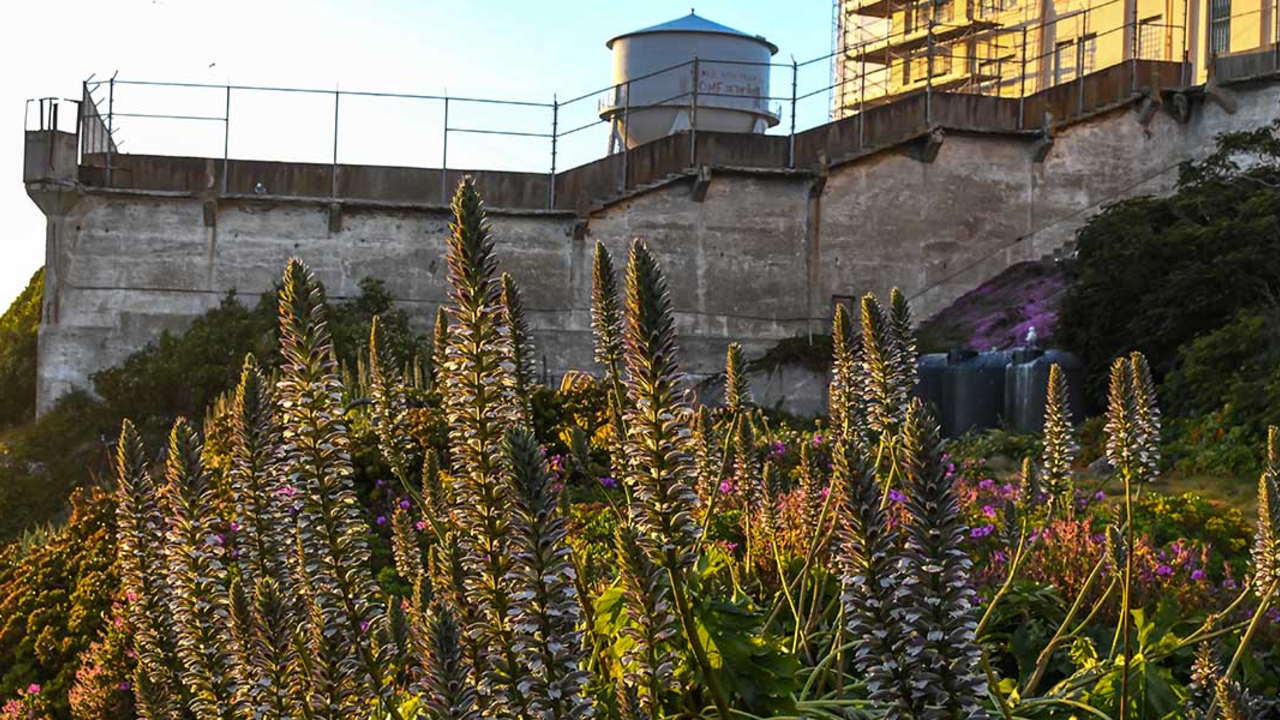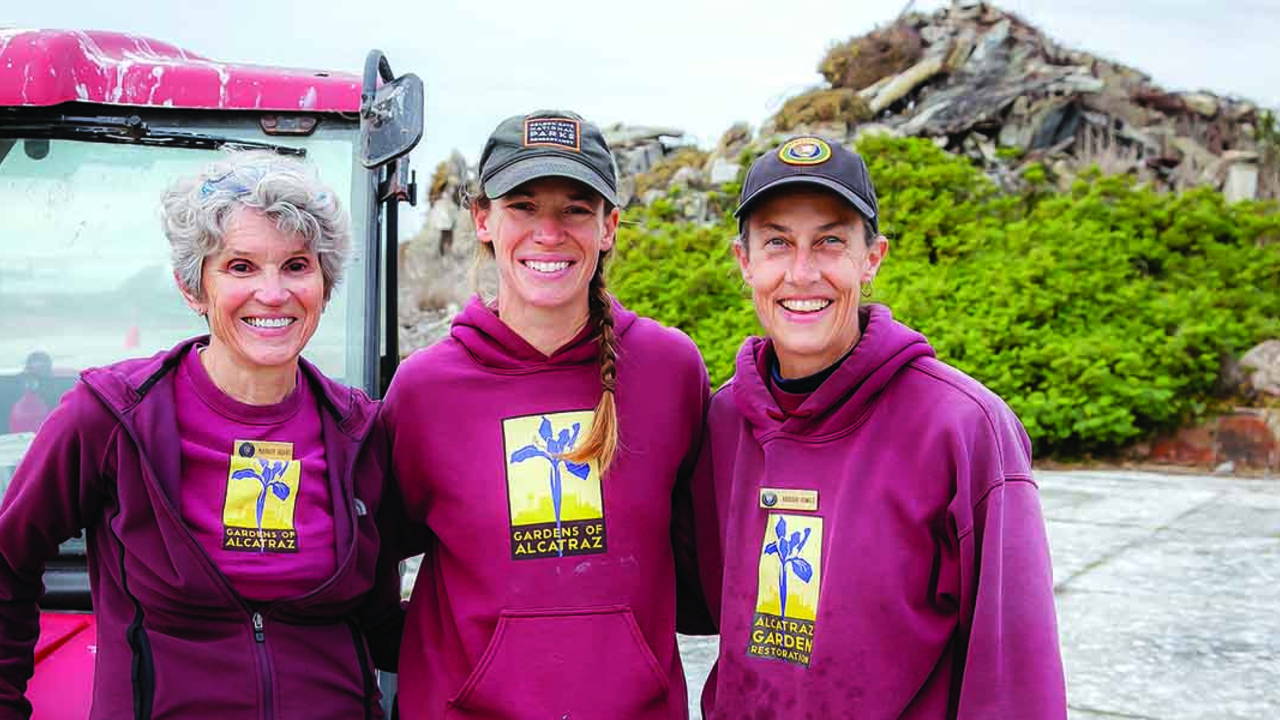'Historic' water once meant for laundry now helps Alcatraz Gardens thrive

Alison Taggart-Barone / Parks Conservancy
Shelagh Fritz has been the Program Manager for Alcatraz Historic Gardens at the Golden Gate National Parks Conservancy since 2009, winning two California Preservation Foundation awards along the way. The Alcatraz Gardens are being restored thanks to the help of National Park Service and Parks Conservancy volunteers.
Recently, Shelagh worked to install an innovative rainwater catchment system on the Rock. We sat down with Shelagh to learn more. The water isn’t stored where you think!
Can you tell us more about the Alcatraz Gardens?
In 2003, the Alcatraz Gardens were selected to be rehabilitated after 40 years of neglect. Volunteers started work on the windswept and harsh environment to remove ivy and blackberries that had imprisoned the historic gardens. They painstakingly removed all this by hand to bring these historic gardens back to life.
What challenges does Alcatraz present?
We just hit 15 years of preserving these gardens, but along the way, we had several challenges. First, we had to figure out what to even do with all the vegetation removed. In our early years of restoration work on the island, we had no trucks and had to use wheelbarrows and determination. And did I mention that Alcatraz has a lot of hills? This was no easy feat!

But we made a lot of progress, especially thanks to the Worm Man of Alcatraz (volunteer Dick Miner, read more about him here), who helped us turn the removed vegetation into award-winning compost! We even ran programs that involved kids to get involved in the gardens to teach them about composting.
Along the lines of sustainable gardening, you came up with a solution for storing water on the island?
Yes, we did. Once we figured out the composting, we tackled the challenge of water. A key ingredient to gardening is water, and on an island with rainwater as its main source, we were severely lacking for water for at least half the year.
While we were working on Alcatraz, we discovered historic cisterns. But nobody seemed to know much about them, other than the fact they were built by the army in the early 1930s and held 250,000 gallons of ‘soft water’ for laundry. But on further investigation, we realized that the system was truly ingenious!
After opening the cisterns, we discovered ‘historic’ water inside. No one even knew how long the water had been stored there. So, we came up with a system to use the historic cisterns.
How did you do this?
We installed a floating pump—powered by a solar panel—in the tanks. We also laid piping aboveground by the rose terrace and pressurized the pipes so we could connect a hose to run our drip line irrigation system. In order to make this system fully sustainable, we have to refill our cisterns regularly and we continue to look for sustainable solutions—like trying to drain water that settles on the laundry building roof and collect water from the cell house downspout. In addition to all this work to capture, store, and generate sustainable sources of water, we recently installed a solar-powered system that should cover all our needs moving forward.
What about the iconic water tower in all the famous photos of Alcatraz?
Ironically, the water tower is empty and not functional at all! It does make for a great photo though.